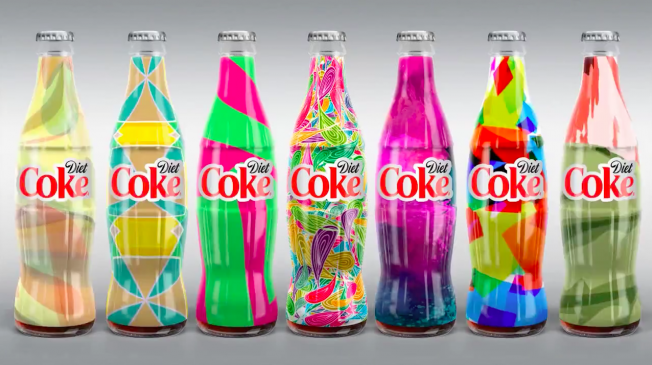Looking at
the semester in reflection, I can confidently say that I will walk away from
BU-215 Marketing with a plethora of useful knowledge about this highly
significant subdivision of the business world. I found several of the marketing
concepts and the terminology discussed in class very useful when dealing with
activities such as Practice Marketing, and even applicable to my life outside
of class, i.e. my job and internship.


McGraw-Hill’s
Practice Marketing market simulation
game definitely helped its user incorporate the knowledge and key concepts
acquired from class to make business decisions and evaluate the outcomes of
those decisions. This relatively elaborate marketing simulation walked the
players through the four aspects of the Marketing Mix: designing a product for
a particular target market segment, setting a price appropriate for their
consumers, establishing distribution channels, and creating an advertising
campaign to promote the product. While we did not have any direct method of
retrieving consumer behavior reports, each target market profile had a basic
‘Consumer Feedback’ section that reflected each segments opinion of your bag,
e.g. how they felt about the price, the features, etc. This game gave us the opportunity to put marketing
into action as a group, similar to a real marketing team. We had to analyze the
market via the given data of the game and decide, as a team, on what could lead
our company to success. Therefore, a loose marketing strategy needed to be
established early on. While it was subject to change, certain elements remained
constant throughout the course of the semester. The roles and responsibilities
of the marketer are to abide by this strategy and strive to expand the
company’s brand. For instance, our goals during the semester were to generate
high revenue so as to maintain a high profitability by producing low-cost
backpacks that could be sold to our consumers at a reasonable price. We stuck
with this philosophy, but changed our target market segment from University
Students to Urban Commuters as the latter proved more apt to purchasing our
product. One gains a true appreciation for the integrated role of marketing in
business decisions once they have immersed themselves in the discipline. Marketing—in particular, through the Marketing Mix—is essentially
the foundation of business.
Another aspect largely
discussed and emphasized in today’s rapidly evolving marketing world is the
ever-important use of social media by marketers. Social media offers marketers
many benefits such as vast decreases in marketing costs, increased brand
recognition, improved brand loyalty, higher conversion rates due to inbound
traffic (people visiting your page due to quality content), and most
importantly, social media listening (obtaining consumers opinions of your
products/brand). For my internship, earlier this semester, I helped lead the
social media campaign for a woman running for state senate. My tasks included
updating the Facebook page daily with promotional statuses about her policies
and beliefs, in addition to daily promo videos of personal testimonies by
supporters from the local area. These practices increased her brand reputation
amongst voters significantly. This experience provided me not only with an
opportunity to attain some real-world marketing involvement, but also it
provided me with an outlet to demonstrate and put to practice many marketing
concepts I had learned in class.

I thoroughly enjoyed class
discussions, attempting to make connections and bring to class any previously
acquired marketing knowledge that I deemed relevant. Working for Coca-Cola,
even as a vendor, I have learned first-hand the importance of my
position. Vendors are the final stage of the distribution channel for food and
drink brands. Their job entails product placement and promotion, stocking
shelves, fronting coolers, and building displays (watch the video below to see how it's done!), all of which enhances the
brand via brand recognition and aesthetics.
Therefore, I often interjected in
class with my own experiences working for one of the world's largest name
brands, related course material to Coca-Cola’s marketing strategy, or shared
some insight on the new, innovative tactics Coke’s marketing team had in
development. I strove for professionalism in class, participating in discussions,
bringing enthusiasm and seriousness to group assignments, and most importantly,
always dressing for success.
Consumers undoubtedly have
the most influence on marketing. Studying consumer behavior, the lengthy
process that a person takes in purchasing and using a product or service, can
prove highly beneficial for marketers. The consumer purchase decision process
provides a basic, and accurate, outline of the five stages a buyer passes through
when making choices about what to buy. Firms and organizations that spend time
and money studying the consumer recognize the importance of meeting their
needs, wants, and expectations, widely known as consumer orientation.
This course has taught me a considerable
amount about marketing, both conceptually and experientially. I will take what
I learned with me for future use, either in a professional setting or in a
personal one (one can market themselves to create their own ‘personal brand’). I
am thankful for the opportunity, and the knowledge I have gained which will
prove useful in my later career. I advise all students to take a marketing
course once in their lifetime as it is not strictly pertinent to business personnel, but all people in general.
Readers, thank you for joining
me this semester.
Peace, Love, Drink Coke.
Adam Geffken

